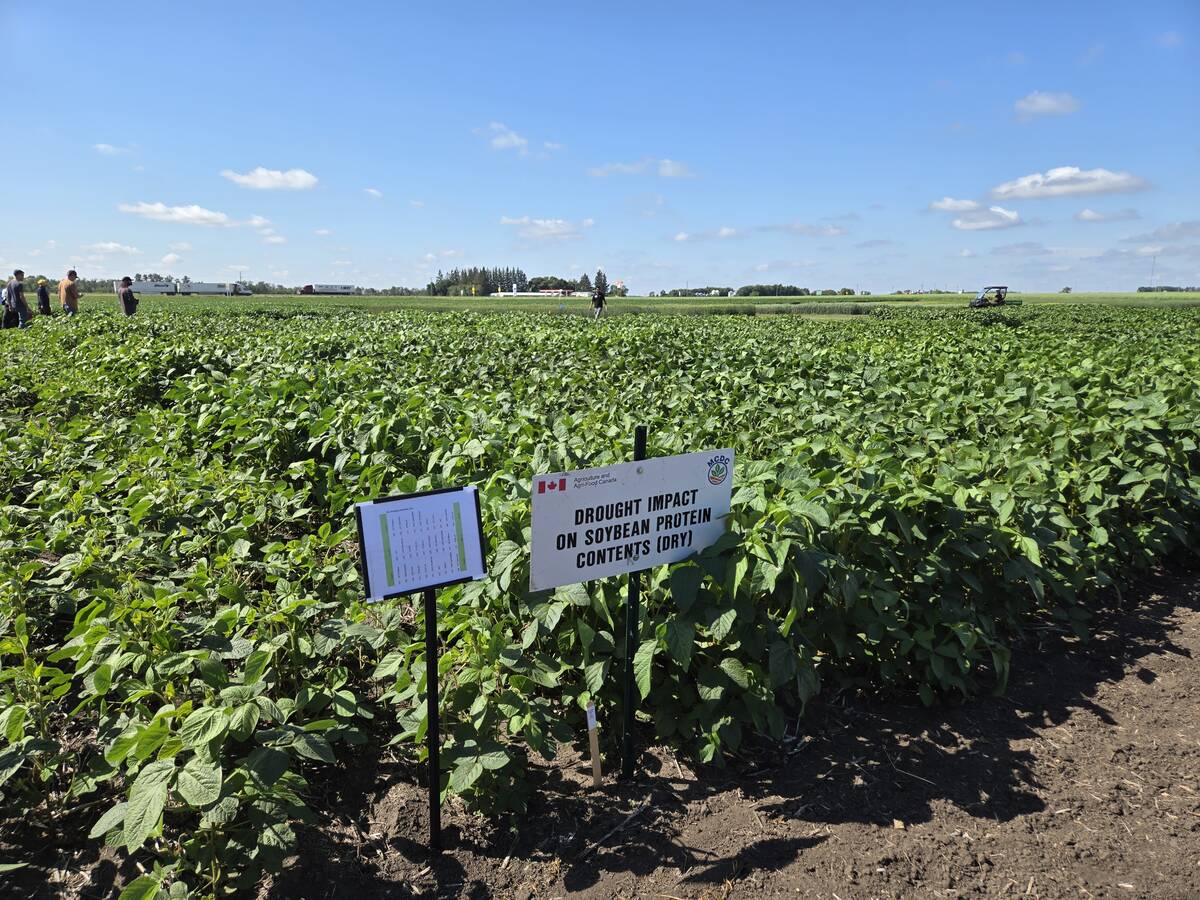When the Canadian Wheat Board’s new chief executive officer arrived for his first day on the job March 31, he didn’t move into the spacious, bright, seventh-floor corner office occupied by his predecessors.
Instead, he found himself in a smaller, windowless, dimly lit office one floor below, listening to the noises associated with a major construction project.
It was nothing personal.
Like many of the board’s employees, Ian White was displaced by a major renovation being carried out at its aging, somewhat run-down head office near Winnipeg’s famous intersection of Portage and Main.
Read Also

Carberry field day looks for agriculture solutions
Manitoba farmers explored research solutions for resilient crops, perpetual agronomic issues and new kinds of agricultural products at a field day at the Manitoba Crop Diversification Centre in Carberry on Aug. 6.
But he wasn’t complaining about the office that will be his home for the rest of this year.
“We’re in quite an adequate office,” he said during a recent interview.
The $12 million renovation project, which began in April 2006 and is expected to last until early 2009, isn’t being done just for cosmetic purposes.
The eight-storey, 14,900 sq. metre structure consists of two sections. The north half of the building was built in the 1930s and the south half was added in 1963, with few upgrades over the years.
Some basic structures of the building, including lighting and duct work, were so old that replacement parts were no longer available, said CWB spokesperson Maureen Fitzhenry.
Those issues couldn’t be addressed without disturbing asbestos in the walls and ceilings, which necessitated asbestos removal to meet standards – a costly and time-consuming process. The renovation is being carried out by moving from floor to floor to ensure everybody can find working space.
While the main reason for the lengthy and costly renovation was the asbestos issue, Fitzhenry added the building was due for a face lift.
“There were places where it was quite worn and dilapidated, which wasn’t necessarily good for the board’s image when customers would come in.”
After the work is done, the market value of the building, now estimated at $4 to $7 million, will be in the range of $17 to $19 million, according to an independent evaluation.
Fitzhenry said the board has been criticized for spending farmers’ money on the project, but added it had no choice given the asbestos issue.














